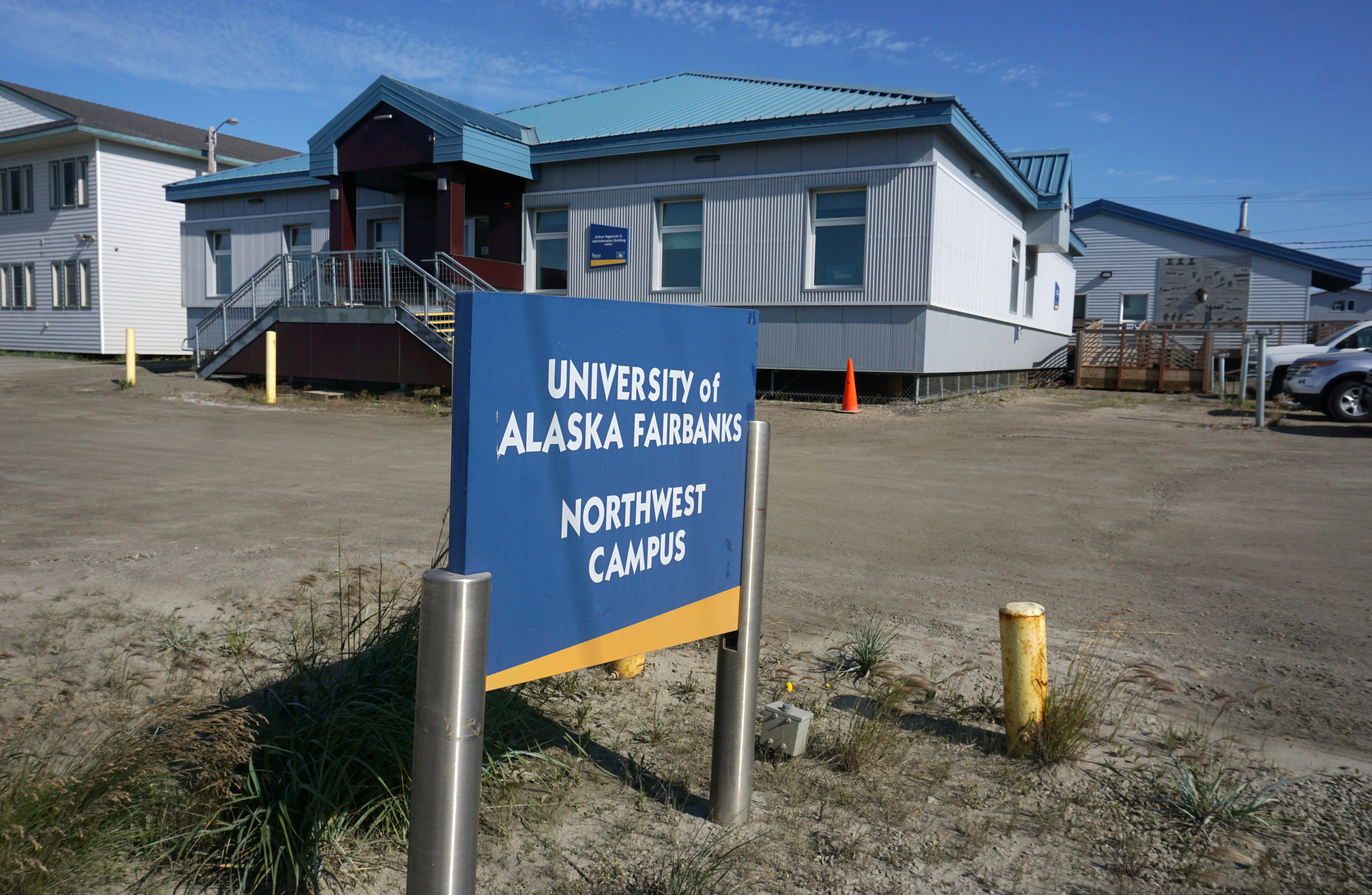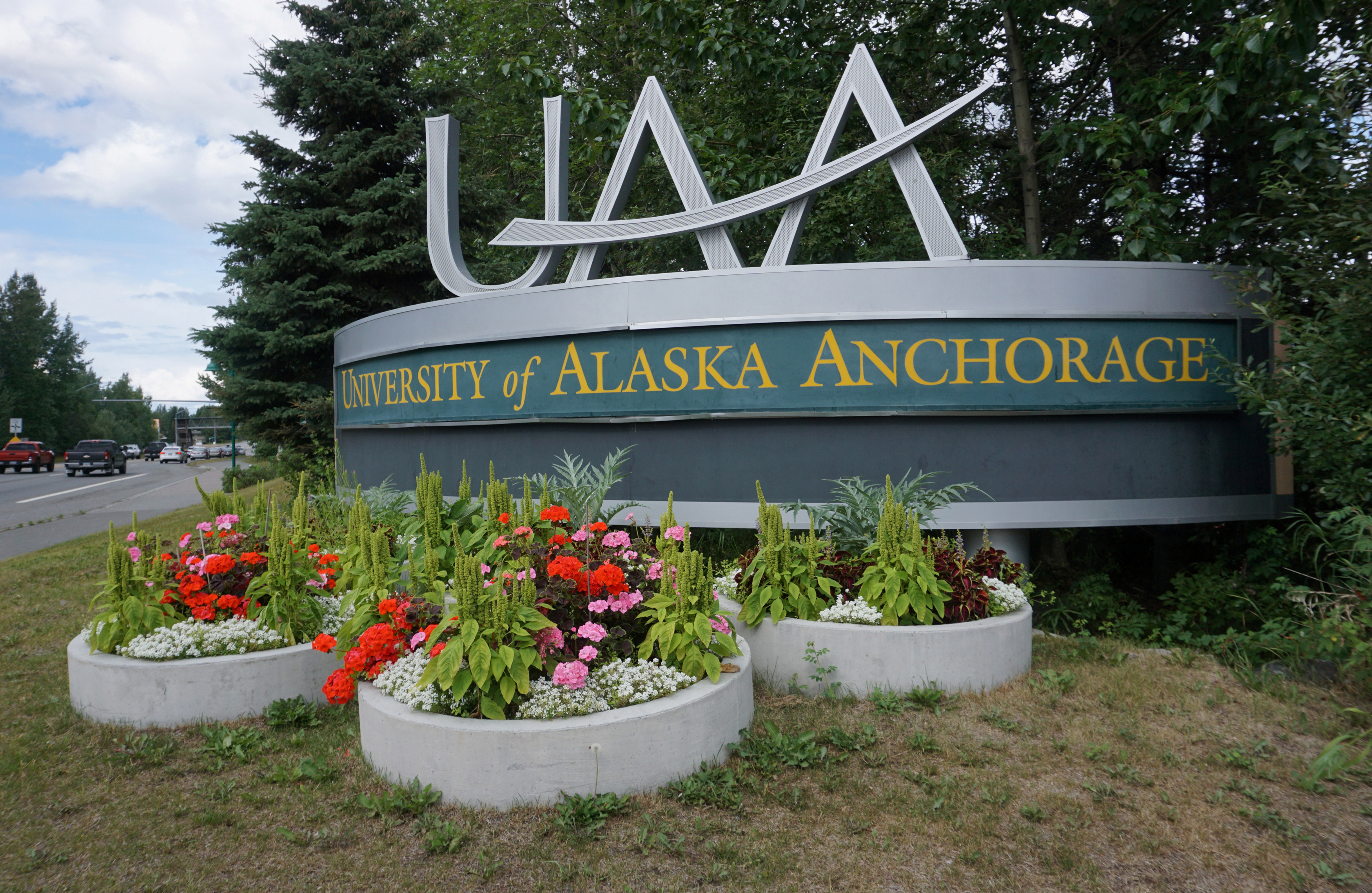Deep budget cuts put University of Alaska in crisis mode; ‘grappling with survival’
The university system's board of regents voted Monday to declare "financial exigency."

ANCHORAGE, Alaska — The University of Alaska Board of Regents, facing deep budget cuts exacted by the governor that will eliminate about 40 percent of the university’s state funding, voted at an emergency meeting on Monday to declare the academic equivalent of bankruptcy reorganization.
The regents’ 10-1 vote puts the university into “financial exigency,” a status allowing administrators to summarily fire tenured faculty and other staff, close whole academic programs and even shut down entire campuses. Up to 2,000 employees could lose their jobs, University of Alaska President Jim Johnsen has said.
The drastic move is necessary, regents said, because of line-item spending vetoes by Republican Governor Mike Dunleavy that slashed $440 million from the budget passed by the state legislature, including $130 million from the university system.
Dunleavy, who took office in December and is an outspoken supporter of U.S. President Donald Trump, has called for major cuts in higher education, health care and other social programs as he pushes to sharply raise the annual oil revenue dividend that Alaska pays to nearly every state resident.
[How Alaska politics created the crisis threatening the state’s university system]
Lawmakers attempted on July 10 to reverse Dunleavy’s budget vetoes but failed to muster the required three-quarters vote to override the governor. The result, the regents said at their meeting, is tragic for the university.
“Unfortunately, we are now grappling with survival,” said John Davies, the board of regents’ chairman.
Davies disputed Dunleavy’s assertion that sharp cuts to the university and other programs were necessary because Alaska faces a financial crisis.
“I believe it’s more of a political crisis. It’s some decisions that have been made by the governor and by a minority of the legislature,” he said.

The budget as passed by the legislature contained a surplus. Dunleavy imposed deep cuts, nevertheless, while pushing to nearly double the dividend paid to residents each year from oil revenues collected for the Alaska Permanent Fund.
Dunleavy’s proposal for a record $3,000 dividend this year, at a time of declining oil industry receipts, would cost the state an estimated $2 billion.
The University of Alaska operates its three main campuses in Fairbanks, Anchorage and Juneau, with 13 smaller satellite campuses in remote communities such as Nome, Bethel and Kodiak. The $130 million cut by the governor is more than the cost of running the entire Anchorage campus, Johnsen has said.
The university, especially the Fairbanks campus, is considered a world-class hub for Arctic and climate change research, and some Dunleavy critics have accused the governor of targeting the university because of that.
“Some prominent conservatives deny the reality of human-caused climate change, and so curtailing UA research is great from their perspective,” Susan Henrichs, a former University of Alaska Fairbanks provost, said in a column published in the Fairbanks Daily News-Miner.
Regents had considered declaring financial exigency a week ago but postponed their decision. Since then, Moody’s sharply downgraded the university’s bond rating, giving it a “negative” outlook.
Members of the legislature’s bipartisan majority coalition said they still hope to restore funding to the university and other programs.